Long before Jonathan Orr was Faith Lutheran’s Director of Innovation and Continuous Improvement, he was an outdoorsman. Born and raised in northern Wisconsin, Jon spent his summers fishing, his falls hunting, and his winters cross country skiing. A science teacher and athletic trainer by training, it is no wonder that he also teaches a biennial summer class called Boundary Waters Ecology.
In June 2021, Orr led his fifth class of Faith Lutheran students to the Boundary Waters Canoe Area Wilderness (BWCA) in northeast Minnesota, one of America's most beautiful and remote places. Its vast wilderness extends 150 miles along the U.S.-Canada border, covering approximately 1,098,000 acres with over 1,100 lakes and 1,500 miles of canoe routes. The class, whose only perquisite is Biology, provides a full year science credit and combines two weeks of classroom learning, an 11 day trip to Minnesota, and four summative projects upon return.
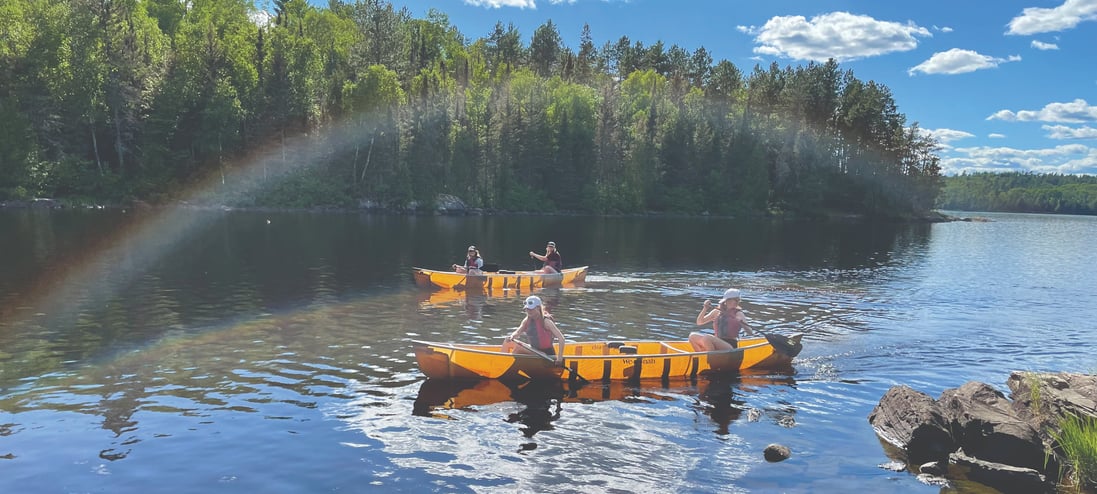
Students keep a field journal throughout the entire trip to Minnesota. The itinerary typically involves a day of travel from Las Vegas to Minneapolis and then a drive to Virginia, MN. The first full day includes a trip to Soudan Mine State Park for an 22-story underground decommissioned iron ore mine tour and then on to Ely, MN where the travelers pack backpacks, review canoeing, and sleep at the outfitter’s bunkhouse. For the next seven days, they are in the boundary waters. On their first day out of the BWCA, they visit Split Rock Light House and Gooseberry Falls State Park before arriving in Duluth, MN for the night. The following day, they visit Duluth Maritime Museum, Duluth Island Beach, and Duluth Aquarium. Following their return flight to Las Vegas from Minneapolis, the group has one more day of class together before given a month to submit their final projects.

The student to chaperone ratio is typically 7:2. Head HS counselor John Chilman has gone on four of the five trips. "Obviously as an educator, spending seven, twenty-four hour days with seven students, is an enormous privilege,” notes Chilman. “While the chaperones are there to protect the students, part of the experience is Mr. Orr expecting them to make their own meals and set up their own tent, learn how to fish, start their own fires, and collect their own water. The independence they learn, and more importantly, what they learn about themselves, is hard to match in any other educational setting. Having lived in Minnesota for the first 38 years of my life, it is fascinating for me to see the land I grew up in through the eyes of the average Las Vegas city slicker. I never grow tired of it. I will go to the BWCA again with friends and family, without students, and it will be less work, but I'm not sure it will be as memorable.”
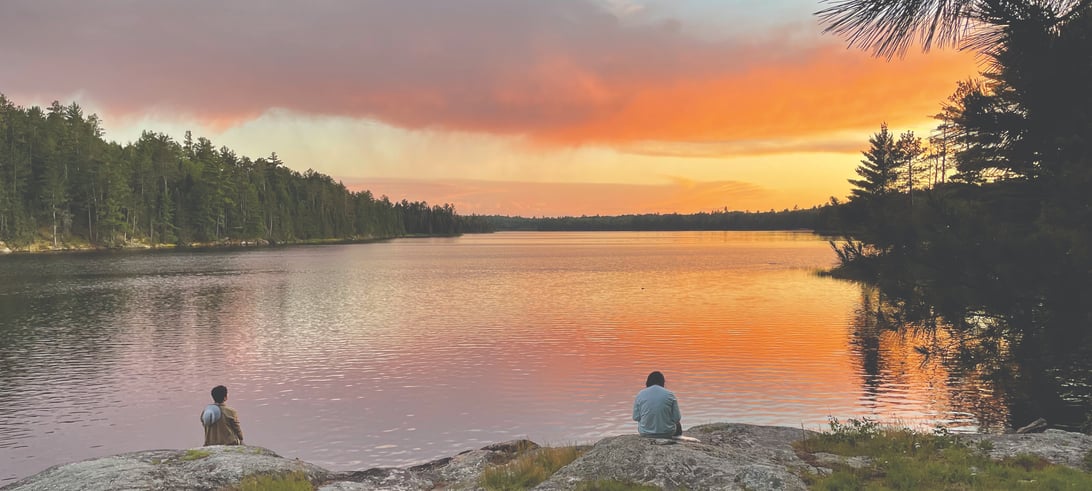
This summer’s chaperones also included MS computer science teacher Jacob Schumacher, HS chemistry teacher Emily Blank, HS social studies teacher Matt Chilman, and Middle School Health teacher Rebecca Cheney who added, “I chaperoned the boundary waters trip because I love camping and canoeing, and I wanted to nurture that love for the outdoors in high school students. The most rewarding part of the trip was seeing students, some of whom had never camped, survive for six days without a cell phone! They learned how to set up a tent, enjoy fresh fish over a fire, and were entertained by the changing colors of the sunset over the lake.”
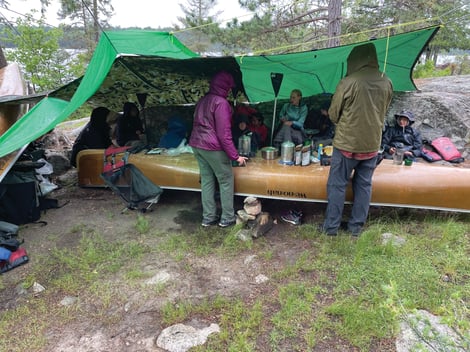 Although more physically demanding than he had anticipated, junior Willem Maniago highly recommends the trip to other students. “My favorite part of the Boundary Waters experience was being completely immersed in nature. We were canoeing, backpacking, hiking, and camping through the wilderness for an entire week without fresh food, Internet, or showers. But even when we were sweaty, stinky, and tired of dehydrated foods, this unlikely group found fellowship with each other, studying and appreciating God’s creation. I also enjoyed meeting this mismatched group of my peers; each of us had a different set of interests so we got to know people we would not usually come into contact with in our daily lives.”
Although more physically demanding than he had anticipated, junior Willem Maniago highly recommends the trip to other students. “My favorite part of the Boundary Waters experience was being completely immersed in nature. We were canoeing, backpacking, hiking, and camping through the wilderness for an entire week without fresh food, Internet, or showers. But even when we were sweaty, stinky, and tired of dehydrated foods, this unlikely group found fellowship with each other, studying and appreciating God’s creation. I also enjoyed meeting this mismatched group of my peers; each of us had a different set of interests so we got to know people we would not usually come into contact with in our daily lives.”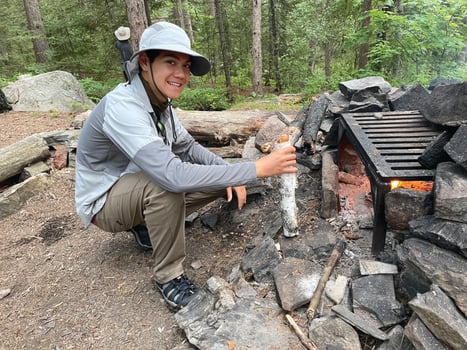
In a typical year, half the students are female and half male. Sophomore Lucy Mathes took the class this summer. “I took this class because I thought it would be a great chance to try something new. My favorite part of going on the trip was meeting new people and learning how to survive in the wilderness for a whole week.
The most difficult part of the class was at every portage we had to carry the canoes and all of our camping backpacks with us. I think that this trip really boosted my self esteem knowing that I could do anything, and I'm much stronger than I think.” Sophomore Samantha Schlaf added, “For two weeks our class, read, researched, and prepared to go to the Boundary Waters. The trip was mentally and physically enduring, but was 100% worth it. Being able to see what we researched and studied for two weeks paid off in the most satisfying way possible. The chaperones that joined us on the trip ensured we were safe and happy for the entirety of the trip. It was truly a blessing to be able to go on the trip and make new friends!”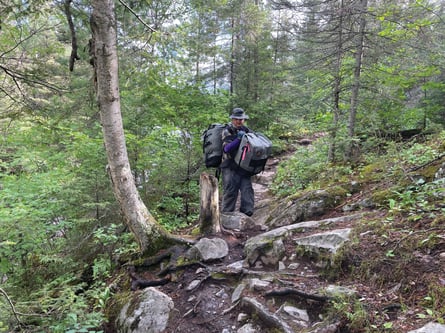 Students do not take their phones into the Boundary Waters since they can become a distraction and since there is no cell signal. Most agree that the portages, the parts of the trip where the canoes and cargo are carried between two navigable waters, are the most difficult part of the experience though mosquitos and lack of indoor plumbing are likely close seconds. “It is definitely not a 10 day vacation,” summarized Chilman. Orr has led the trip enough times that he can predict where the kids are going to be mentally on each day of the trip. “Portaging is tough to move canoes and supplies over land. Learning how to set up camp, understanding the environment they are in, and cooking food are all new to them. They hit an emotional and physical wall after day 5. They always rally though; they find their energy again on the final day.”
Students do not take their phones into the Boundary Waters since they can become a distraction and since there is no cell signal. Most agree that the portages, the parts of the trip where the canoes and cargo are carried between two navigable waters, are the most difficult part of the experience though mosquitos and lack of indoor plumbing are likely close seconds. “It is definitely not a 10 day vacation,” summarized Chilman. Orr has led the trip enough times that he can predict where the kids are going to be mentally on each day of the trip. “Portaging is tough to move canoes and supplies over land. Learning how to set up camp, understanding the environment they are in, and cooking food are all new to them. They hit an emotional and physical wall after day 5. They always rally though; they find their energy again on the final day.”
Orr will continue to offer the class; the next one is scheduled for June 2023. He concluded, “I love the format of the course. I’m passionate about experiential learning and teaching kids and getting them involved in what they actually learning about. To actually go out and experience how all of this ties together is wonderful. To see it and experience it puts the knowledge in a whole different light. The learning becomes super impactful. It’s great to take kids to a place they’ve never experienced before and show them that. That’s why teachers teach. We are always showing kids new things. We love to see people learn and do new things. It’s more exciting for me to watch others experience this for the first time.”




